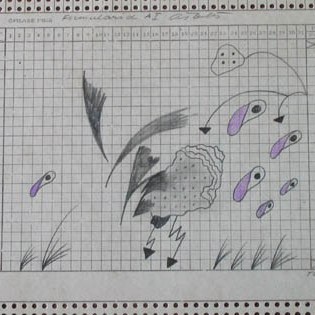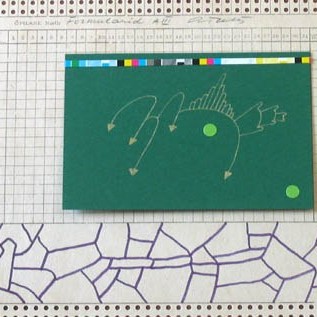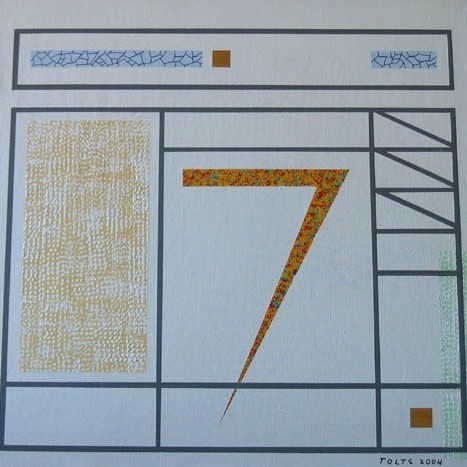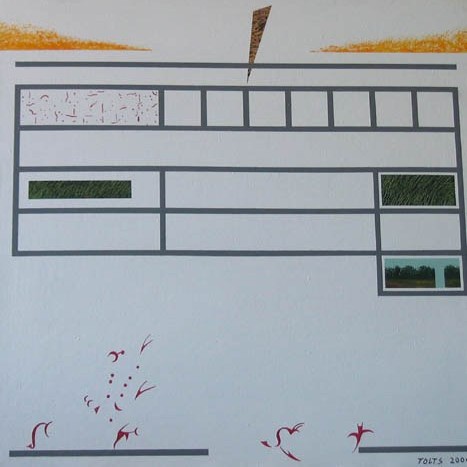Exhibition > Past > SEB Gallery
SEB Gallery 22.09.2004-29.10.2004
2
Forms
Bureaucratic documents are being used in Andres Tolts\' new works.
Even though surprising, at the moment it seems natural that who else but Andres Tolts should have started taking the machine of bureaucracy into parts. After Tolts had participated during the second half of the 60ies as a young student in playful happenings and had painted flowing cars and unearthly tennis players, he became quite measurable in the following decades. On his paintings ran stripes and lines, which did not have any function whatsoever. They limited nothing, they did not frame any concrete configurations, nobody leaned on them and actually those, being depicted on the paintings, never paid any attention to them. Still, Tolts continued dividing of his paintings into sectors and units, blanks and footnotes with a systematic, even dry consistency. We should confess that all of it included something very suspicious.
With the present exhibition brings Tolts, whose artist’s status could be described as that of a bohemian, finally out a skeleton from his closet. There, as it becomes clear, he has kept all possible documents starting from bank forms and finishing with KGB agent’s report sheets. If we try to make an attempt at the exhibition to switch on the interpretation machine, then we could most obviously concentrate on two options. Firstly: the interpretation of Tolts as a citizen of the requisites of bureaucracy, of the footmen of officiality. And secondly: love of Tolts as an artist towards the aesthetic qualities of the forms.
Let’s start from the first one. Tolts as a citizen is most probably reflected to us first of all in his small-sized collages. Here he as an experienced pop-artist has collected from the visual surroundings around us a certain phenomenon – in the current case documents – and has started to make use of them as the basic material for art. It is not a random choice that these are official documents, because it is bureaucracy, which artists have always been opposed to. And this is the case now as well. Having taken the official forms, Tolts starts making there random scribbles, gluing dots on them. Any official tone becomes here a comedy, the forced seriousness evaporates. And even though moralité is hardly the core of the art of Tolts, then still: here he says something of great importance. Something that at the first glance maybe seems to be the outdated truth, but that still functions: also bureaucracy is nothing but a human agreement.
Tolts as an artist is in the first range reflected in his paintings. Here he uses as surface structuring units the framework and surface division that is already known to us from the documents. He is one of the few in the Estonian art, who has always heroically stood for the aesthetic positions, who has had the bravery to include in the artistic sphere also something, which at the first sight might seem commonplace. Tolts is able to notice how in the dry paperwork actually exist certain forms, factures, methods of organising of the substance, which could be of interest. Because finally – it is only man, who is behind both bureaucracy and art.







